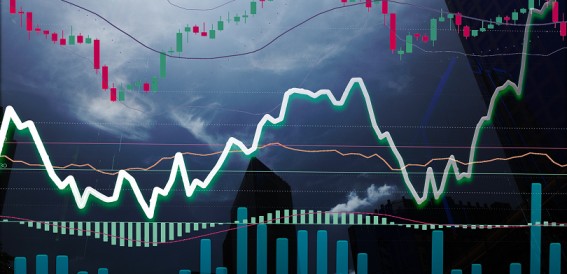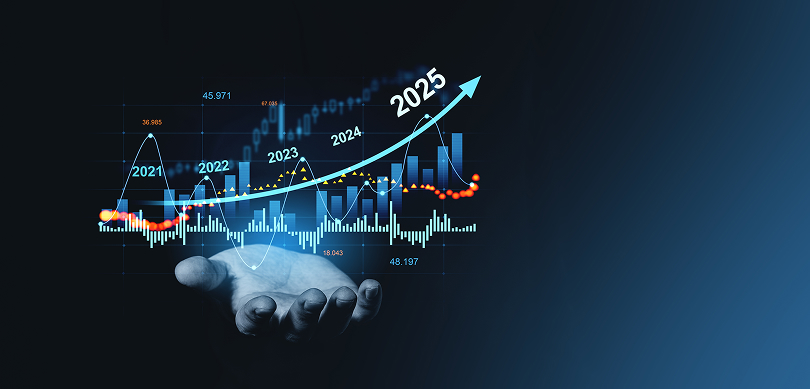Various individuals choose Fixed Deposits (FDs) as they represent a dependable, minimal-risk savings method to obtain stable returns. But the steady increase in everyday expenses reduces the actual value of interest earnings from FDs. This article examines the impact of inflation on fixed deposits while presenting actual methods that assist investors to protect and build their wealth during inflation.
What is Inflation?
A steady rate of increase in price levels over time causes inflation. Cost elevations lead to the diminishing worth of monetary assets. The purchasing power of money decreases because all items become more costly.
The tools Consumer Price Index (CPI) and Wholesale Price Index (WPI) serve as inflation trackers throughout India. The Reserve Bank of India (RBI) releases periodic data through these tools to illustrate the rate increases in prices.
How Inflation Affects Fixed Deposits (FDs)
Inflation directly affects the real value of Fixed Deposit (FD) returns. While FDs offer fixed interest rates, the rising cost of living can reduce the purchasing power of the money earned. As inflation increases, investors may find that their FD earnings don’t stretch as far as expected.
To understand this better, let’s break down the specific ways inflation impacts FD investments:
-
Reduced Purchasing Power
Even if your FD gives you good interest, rising prices mean your money buys less. So the actual benefit from your interest goes down over time. This is because inflation eats into the value of your returns, making it harder to meet future financial goals. To truly grow wealth, it’s important to consider how inflation affects real returns, not just the numbers on paper.
-
Lower Real Returns
To know your actual profit, subtract the inflation rate from your FD interest rate. For example:
- FD Interest Rate: 6%
- Inflation Rate: 4%
- Real Return: 2%
So, while your FD shows 6% earnings, the real value added to your money is only 2%.
-
Impact of Repo Rate Changes
When inflation increases, the RBI may raise the repo rate, which is the rate at which commercial banks borrow money from the central bank. This move is meant to control inflation, but it also impacts interest rates across the board. As a result, banks may offer higher or lower interest on FDs depending on the economic situation, making inflation a key factor in determining FD returns.
Begin your investing journey today. Your Demat account is the first step.
How to Maximise FD Returns During Inflation
While inflation can reduce the real value of fixed deposit returns, there are smart ways to protect and even enhance your earnings. By making informed choices and planning ahead, investors can minimise the impact of inflation on their FDs.
Here are some strategies to get the most out of your investment:
-
Avoid Early Withdrawals
Breaking your FD before it matures often results in a penalty, reducing your total interest. In addition, early withdrawals can disrupt your long-term financial plan. Letting your FD reach full maturity ensures you earn the maximum return without any deductions. Patience pays off when it comes to fixed deposits.
-
Use Senior Citizen Benefits
If your parents are above 60 and fall under a non-taxable income bracket, consider opening an FD in their name. Banks offer higher interest rates for senior citizens, which can significantly boost returns. This simple step helps maximise the interest earned on your fixed deposit.
-
Submit Form 15G or 15H
If you don’t fall under the taxable income limit, submit Form 15G (for those below 60) or Form 15H (for those above 60). This ensures that tax is not deducted on your FD interest, allowing you to retain the full amount.
Investing During Inflation
Investing during inflation requires a strategic approach to protect your wealth and maximise returns. As inflation erodes purchasing power, it’s essential to adapt your investment strategy to safeguard your financial goals and achieve better returns. Here are some tips for investing wisely during inflationary periods.
If inflation is rising, consider the following investment tips:
-
Invest in Short-Term FDs
Shorter fixed deposits give you flexibility. If rates go up, you can reinvest sooner at better rates rather than being stuck in a long-term plan. This allows you to take advantage of rising interest rates, ensuring your money keeps growing even during inflationary periods. It also gives you more control over your investment strategy.
-
Diversify Your Investments
Spread your investments across different options like mutual funds, stocks, real estate, or inflation-linked bonds. This helps reduce risk and could offer better returns, especially when inflation is high. Diversifying your portfolio ensures that your investments are better protected against inflation’s impact.
-
Choose High-Yield Options
Look around and compare FD rates across banks and financial institutions. Some offer higher interest rates than others, even during inflation. Make sure to choose wisely by comparing the terms and conditions, as well as any additional benefits or penalties for early withdrawal. This ensures you get the best return on your investment.
Conclusion
Inflation quietly reduces the real value of your FD returns, even though the interest rate stays the same. But by using smart strategies like avoiding early withdrawals, making use of senior citizen benefits, submitting the right tax forms, and diversifying your investments, you can protect your money and get better results.
Understanding how inflation affects FDs helps you make better financial decisions. A well-planned strategy can ensure your savings grow, even in times of rising prices.
Recommended Read: Mutual Funds Vs Fixed Deposits?
Frequently Asked Questions
-
Can FD beat inflation in India?
Fixed Deposits (FDs) in India often offer stable returns, but they may not always beat inflation. If the inflation rate is higher than the interest earned on an FD, the real value of your money goes down. In such cases, even though your FD earns interest, your purchasing power may still decrease over time.
-
Are fixed costs affected by inflation?
Fixed costs, like rent or salaries under a long-term contract, usually remain stable in the short term. However, over time, inflation can increase the cost of renewing contracts or services. So while fixed costs don’t change immediately, they can still be impacted in the long run due to rising price levels.
-
How to fight inflation?
To fight inflation, one can invest in assets that offer higher returns than the inflation rate. This includes stocks, mutual funds, real estate, or inflation-linked bonds. Adjusting your spending habits and avoiding long-term low-yield investments like traditional FDs can also help protect your money’s value.
-
What are the worst investments during inflation?
Investments that give fixed low returns, like long-term fixed deposits or regular savings accounts, often perform poorly during inflation. Since their interest earnings don’t rise with prices, your real return may be negative, making it harder to keep up with the rising cost of living.











